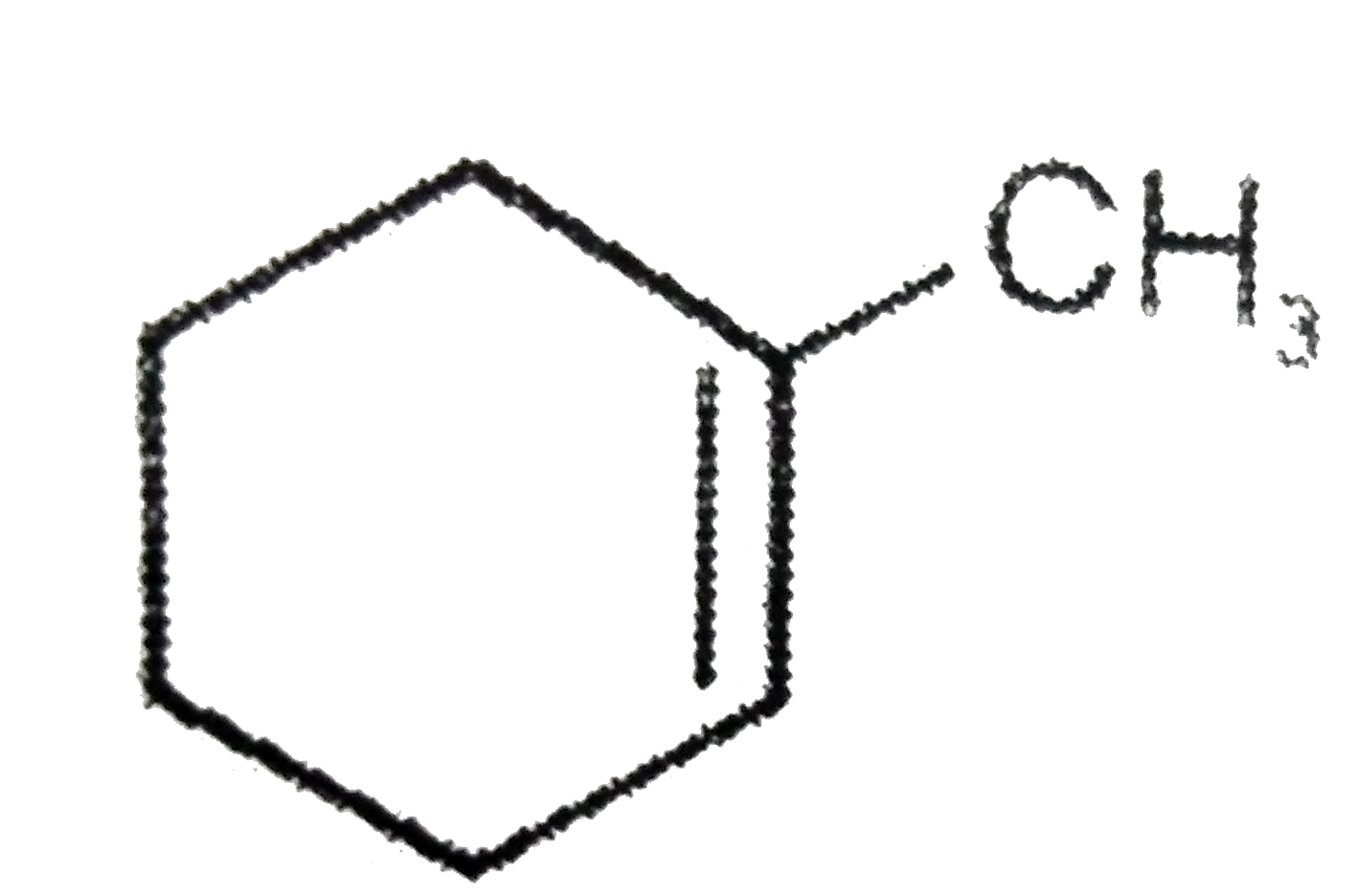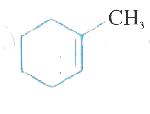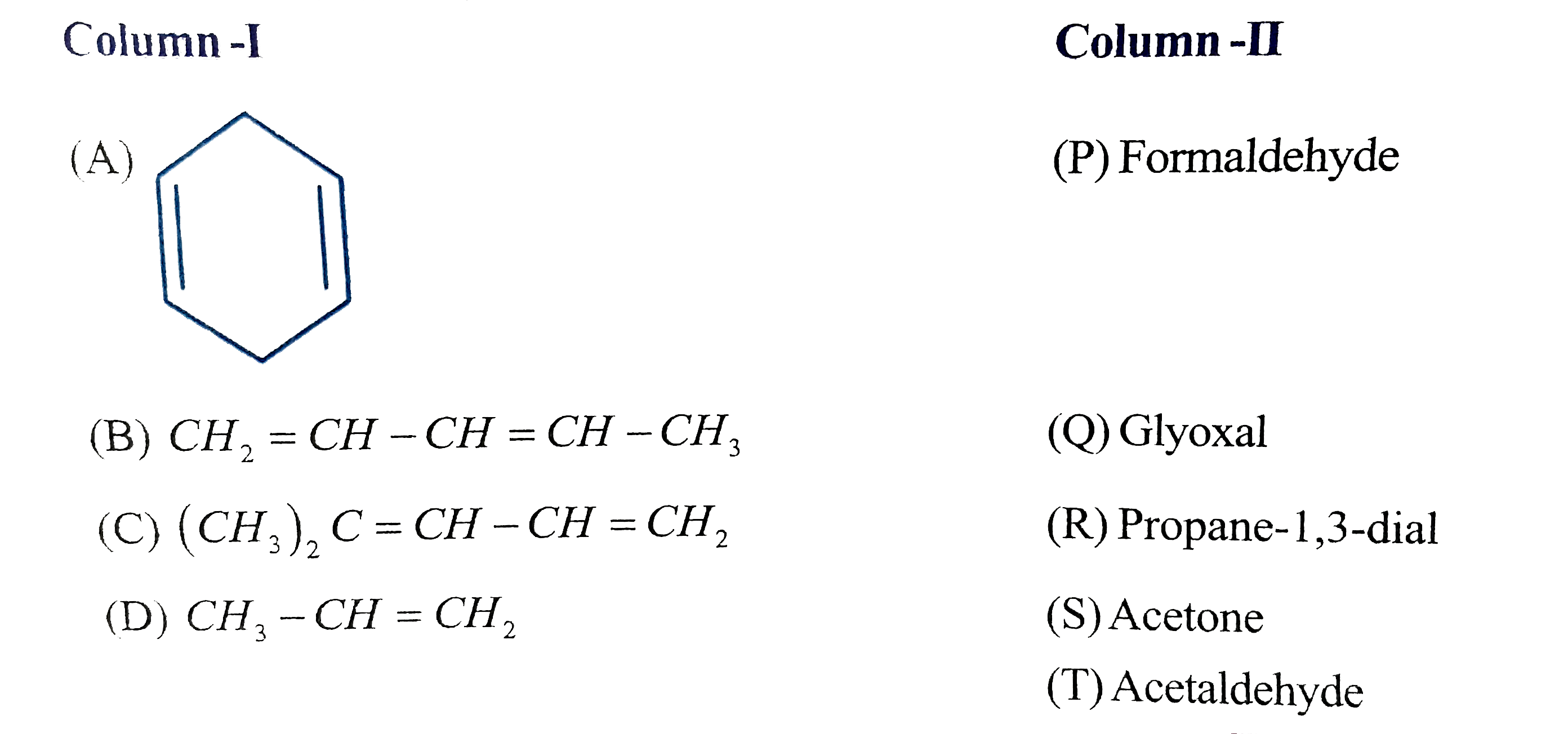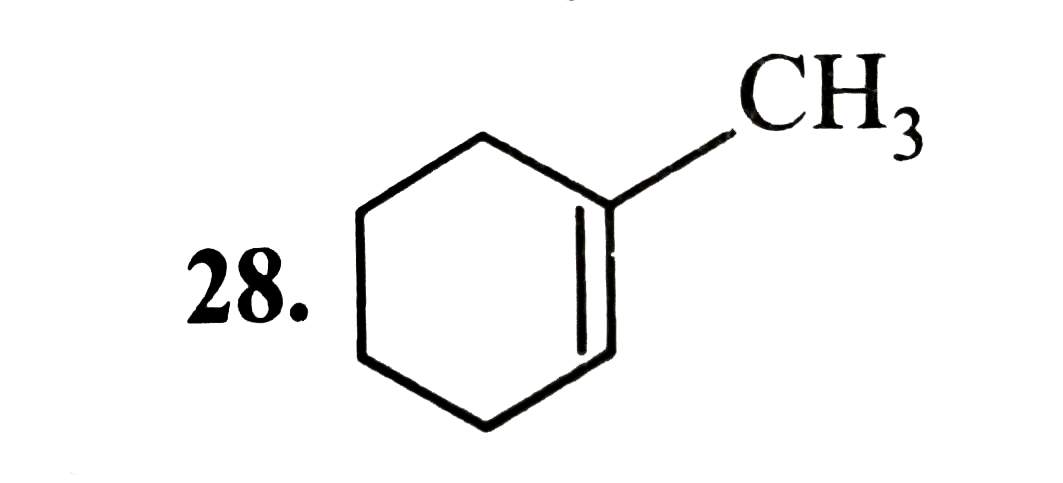Identify the product of reductive ozonolysis of toluene ?
Glyceraldehyde, Methyl glyoxal
Glyoxal, Methyl glyoxal
Glyoxal, Pyruvic acid (CH3COCOOH)
Oxalic acid, Pyruvic acid
To identify the product of reductive ozonolysis of toluene, we will follow these steps:
Step 1: Understand the Structure of Toluene
Toluene is an aromatic hydrocarbon with the chemical formula C7H8. Its structure consists of a benzene ring (C6H5) with a methyl group (CH3) attached to it.
Step 2: Define Reductive Ozonolysis
Reductive ozonolysis is a reaction where ozone (O3) is used to cleave double bonds in alkenes or aromatic compounds, followed by a reduction step (usually with zinc, Zn) that converts the resulting ozonides into carbonyl compounds (aldehydes or ketones).
Step 3: Apply Reductive Ozonolysis to Toluene
1. Ozonolysis Reaction: When toluene undergoes reductive ozonolysis, the aromatic ring can be cleaved at the position of the methyl group.
2. Formation of Ozonide: The reaction involves the formation of an ozonide intermediate where the double bond is cleaved, and two carbonyl groups are formed.
Step 4: Identify the Products
1. Cleavage of the Methyl Group: The methyl group (CH3) attached to the benzene ring will lead to the formation of two products:
- One product will be an aldehyde (from the carbon adjacent to the methyl group).
- The other product will be a ketone (from the carbon of the methyl group).
2. Final Products: The products of the reductive ozonolysis of toluene are:
- Glyoxal (O=C-CHO)
- Methyl glyoxal (O=C-CH3)
Conclusion
The products of reductive ozonolysis of toluene are glyoxal and methyl glyoxal.
Toluene is an aromatic hydrocarbon with the chemical formula C7H8. Its structure consists of a benzene ring (C6H5) with a methyl group (CH3) attached to it.
Reductive ozonolysis is a reaction where ozone (O3) is used to cleave double bonds in alkenes or aromatic compounds, followed by a reduction step (usually with zinc, Zn) that converts the resulting ozonides into carbonyl compounds (aldehydes or ketones).
1. Ozonolysis Reaction: When toluene undergoes reductive ozonolysis, the aromatic ring can be cleaved at the position of the methyl group.
2. Formation of Ozonide: The reaction involves the formation of an ozonide intermediate where the double bond is cleaved, and two carbonyl groups are formed.
1. Cleavage of the Methyl Group: The methyl group (CH3) attached to the benzene ring will lead to the formation of two products:
- One product will be an aldehyde (from the carbon adjacent to the methyl group).
- The other product will be a ketone (from the carbon of the methyl group).
- Glyoxal (O=C-CHO)
- Methyl glyoxal (O=C-CH3)
The products of reductive ozonolysis of toluene are glyoxal and methyl glyoxal.
Similar Questions
Give the product(s) of reductive ozonolysis of the following compounds.
a)
View Solutiona) Give the structural formulae of the alkene (C8H16) which on reductive ozonolysis gives butan-2-one.
b) Write the structure of that compound which on reductive ozonolysis gives propane-1,3-dial.
c) Write the products of the reductive ozonlysis of mesitylene with i) (Zn/CH3COOH)
ii) NaBH4 or LAH.
d) Give the structural formulae of the alkene which on reductive ozonolysis gives a mixture of 2-methyl-butanal and pentan-2-one.
View Solution
Knowledge Check
Reductive ozonolysis of o-sylene gives
AGlyoxalBMethyl glycoxalCDimethyl glyoxalDAll of these on reductive ozonolysis yeilds A6-oxogeptanalB6-oxoheptanoic acidC6-hydroxyheptanalD3-hydoroxypentanal
on reductive ozonolysis yeilds A6-oxogeptanalB6-oxoheptanoic acidC6-hydroxyheptanalD3-hydoroxypentanal
On reductive ozonolysis yieldsA6-oxoheptanalB6-oxoheptanoic acidC6-hydroxyheptanalD3-hydroxypentanal
Name the product obtained by reductive ozonolysis of ethene.
View SolutionMatch each of the compound in column I with the product of reductive ozonolysis in column-II

View SolutionMatch each of the compound in column I with the product of reductive ozonolysis in column-II

View Solution On reductive ozonolysis yields
On reductive ozonolysis yields
View SolutionOn reductive ozonolysis, ethylene gives
View Solution
